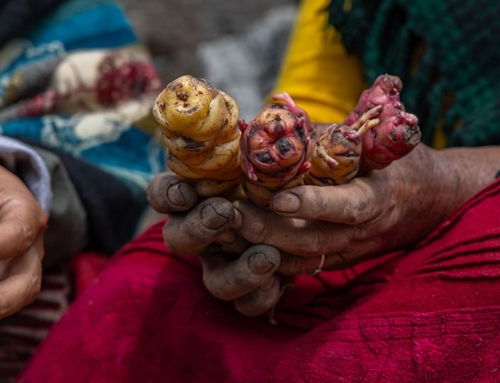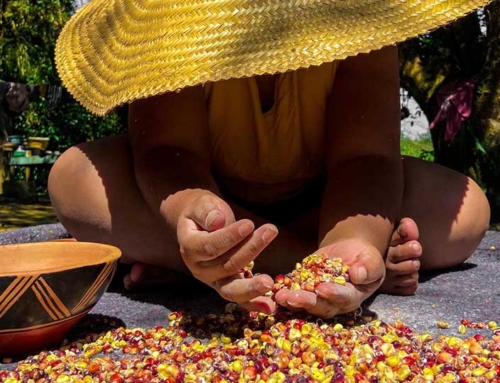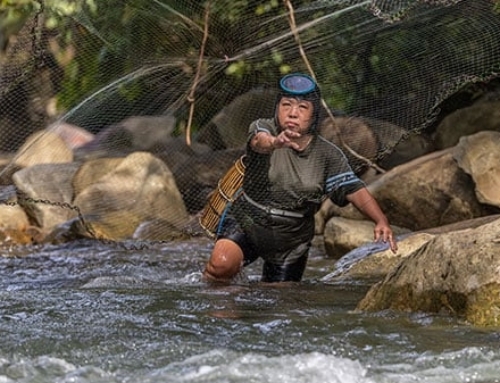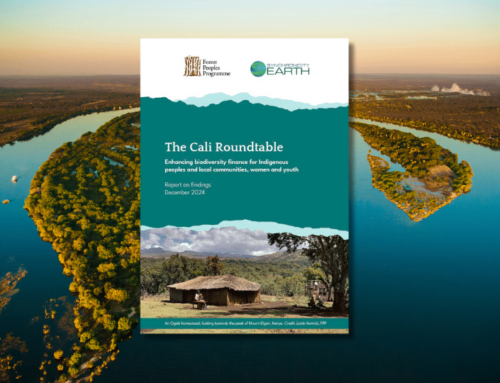“Money earmarked for Indigenous people that sits in a bank because of worries about Indigenous ‘capacity’ is water sitting in a locked fire hydrant while a city burns down because you’re worried the firefighters can’t handle the job.”
This is how Tapestry Institute’s Standing Our Ground for the Land: An Indigenous Philanthropy describes a key issue in efforts to tackle the interlinked climate and biodiversity crises – too often, landmark climate and conservation funding pledges fail to reach the Indigenous Peoples and local communities who own, use, and manage the land, and who are best placed to enact change.
With funders increasingly aware of the need to shake up traditional giving models, the push for systemic change in the philanthropy sector is gaining momentum. This means shifting power – funds, capacity, and recognition of rights – to Indigenous and local communities.
So how can we close the gap between pledges and action? Synchronicity Earth recently co-authored an article with Maliasili, Rights and Resources Initiative, and Rainforest Foundation Norway. Published in the Stanford Social Innovation Review, it addresses the challenges and next steps in moving towards better climate funding.
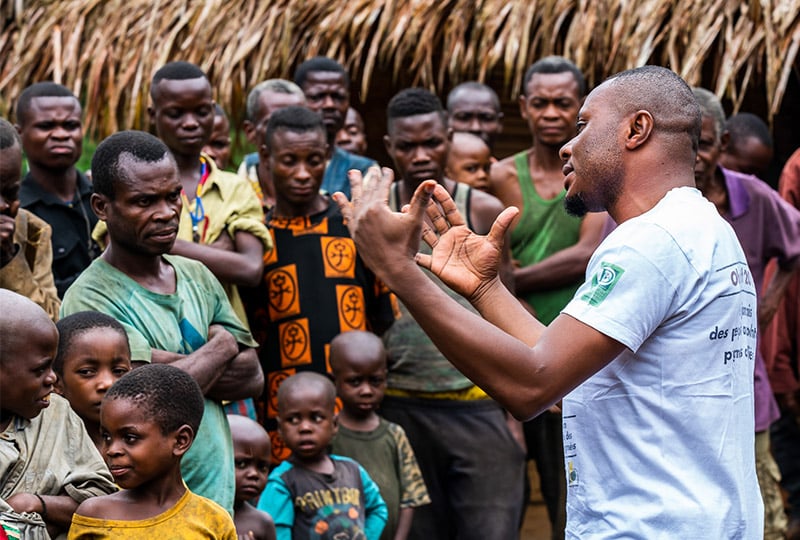
Synchronicity Earth partner Dynamique des Groupes des Peuples Autochtones (DGPA), has formed a network, including Batwa Indigenous Peoples’ groups, to secure Indigenous Peoples’ rights, and highlight their role in protecting forests and associated biodiversity. © Chris Scarffe
Fixing the funding chain: the first step for change
Addressing the climate and biodiversity crises, themes of interconnectedness come up time and time again. Practically, this translates to ensuring a strong chain of collaborators to tackle conservation challenges, whereby funding must reach Indigenous and local communities working to protect the environment. However, recent findings highlight missing links in this chain and the power imbalances hindering efforts to preserve biodiversity.
Worldwide, Indigenous Territories and other community lands account for approximately the same land area as formally protected reserves and parks. Though much of their land is not legally recognised, Indigenous Peoples and local communities own, use or manage at least 50% of the Earth’s land area, and 36% of all intact forests – within them, significant numbers of endangered species.
Having acted as stewards of the natural world for thousands of years, with all the ancient knowledge that entails, Indigenous Peoples and local communities play a crucial role in protecting biodiversity. In line with this, the Convention on Biological Diversity’s target to protect 30% of the world’s lands, inland waters, and coastal and marine areas by 2030 stressed the importance of recognising Indigenous rights and respecting traditional territories.
Despite this, research by the Rainforest Foundation Norway indicates that, globally, less than 1% of climate funding reaches Indigenous groups. Seeking to address this, the 2021 UN climate summit saw funders pledge $1.7 billion to support Indigenous land rights and forest tenure. But a review the following year estimated that, still, only 7% went directly to Indigenous communities.
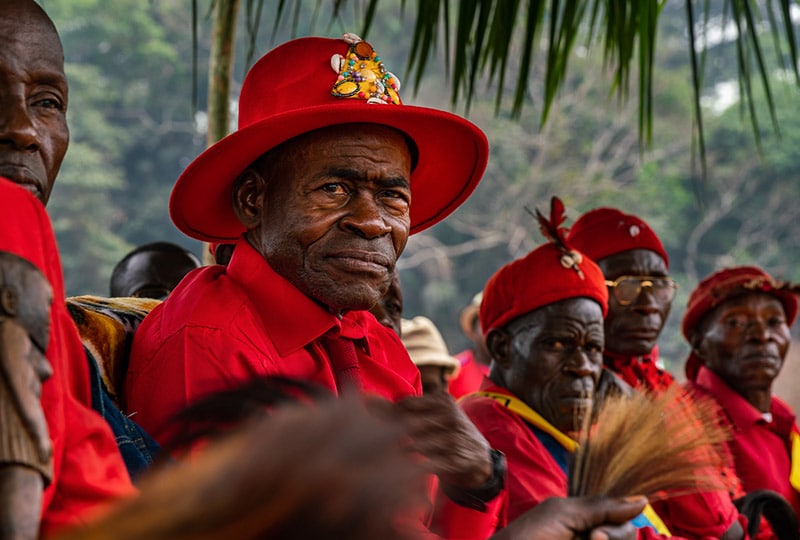
Mbou Mon Tour is a group of communities working in Mai Ndombe, Democratic Republic of Congo (DRC), to protect forests and savannah. © Chris Scarffe
Challenges to effective funding
The design and structure of the funding that does reach Indigenous and local groups is not ‘fit for purpose’. Barriers of traditional giving models include:
– Difficulties gaining sufficient core funding due to limited investment in organisational costs;
– Short-term grants and project structures;
– Onerous and time-consuming proposal and reporting requirements; and
– High transaction costs of accessing funding.
Towards more impactful climate and conservation funding
Structural changes are needed to ensure funding practices make grants simpler to access. Making use of recent research findings, the article suggests some key priorities.
1) Improve grant-making practices
To make grants fit for purpose for Indigenous and local community groups, philanthropists and funders should move towards:
– Co-designing grants with Indigenous peoples to move away from project-based funding.
– Creating longer-term and unrestricted grants.
– Reducing the transaction costs of grants.
– Allowing reporting and proposals in native languages, either written or verbal.
2) Better intermediary structures and partnerships
Successful intermediary mechanisms help move money from donors to local organisations, but, after going through international aid processes, only a small portion of funding flows directly to them. Better intermediary partnerships can help to:
– Reduce administrative burdens, like applications and report writing;
– Facilitate making several, smaller-scale grants; and
– Free up capacity so local organisations can focus on conservation in the field.
3) Addressing ‘capacity’ challenges
Shifting power is only possible with a shift in ways of thinking. Bridging the gap between Western philanthropists and Indigenous collaborators relies on better understanding of Indigenous perspectives and sovereignty. Instead of strict guidelines judging the ‘capacity’ of local groups, funders can focus on building trust and supporting delivery by:
– Investing in infrastructure and staff;
– Giving local organisations agency and flexibility; and
– Committing to decolonising traditional giving channels by letting Indigenous people lead.
4) Sharing knowledge about new funding structures
There has been progress in encouraging and adopting more agile funding policies and practices. We can continue to strengthen partnerships by:
– Using existing networks, and creating others, to share learnings about new local funding mechanisms across different Indigenous groups; and
– Exchanging the successes of more just and inclusive models.
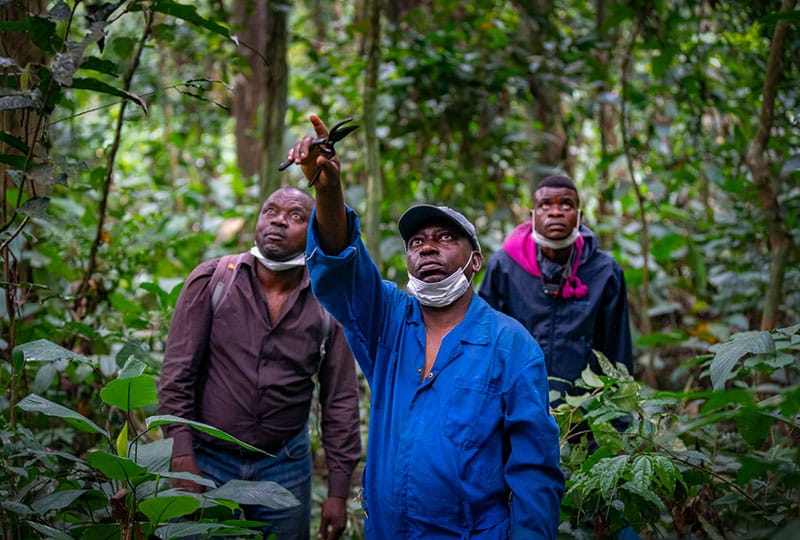
To protect the bonobos and their forest-savanna home, Mbou Mon Tour established an awareness raising programme in local villages; created a network of six community protected forest areas; and employed local villagers as bonobo trackers. © Chris Scarffe
Turning pledges into action
In summary, there is far to go. But with that comes a huge opportunity to transform ineffective systems. To move away from the traditional funding model – a leaky bucket passed down a long line – new grant designs must respect and centre Indigenous voices. Combined, local actions have a global effect. More and better funding for local groups means more conservation success.
Ultimately, everyone involved in the funding chain – philanthropists, donors, international organisations, and local communities – all share the aim of protecting the planet we live on. At Synchronicity Earth, we are actively exploring our own funding practices: in collaboration with our global partners and other aligned environmental funders, we are sharing knowledge and practice, and highlighting issues and solutions in global conservation dialogues and spaces.
For too long, Indigenous Peoples and local communities have been little more than an afterthought for many conservation organisations based in the Global North. But the mood is changing: there is growing recognition of the need for a shift in the balance of power to ensure that the encouraging increase in climate and biodiversity funding pledges is matched by a commitment to developing funding practices that centre the local people and initiatives that are best placed to deliver positive and lasting impact for people and planet.

